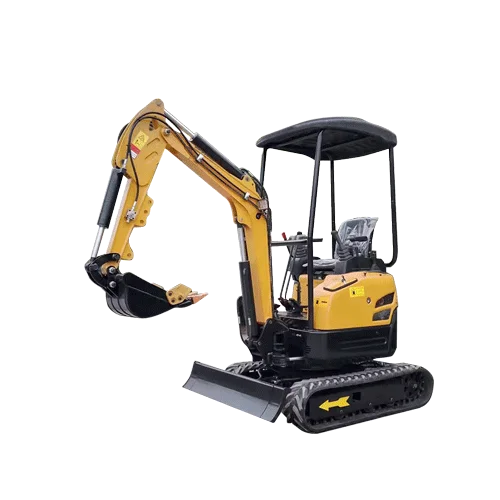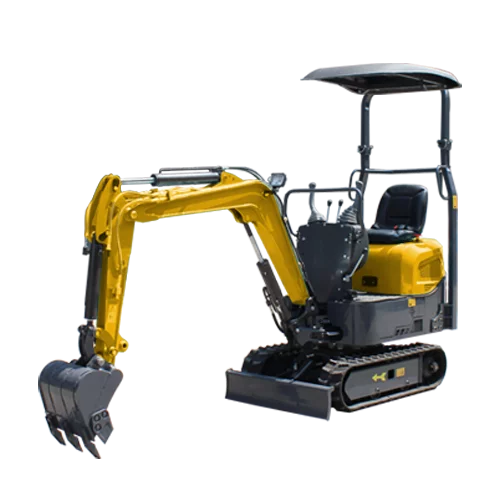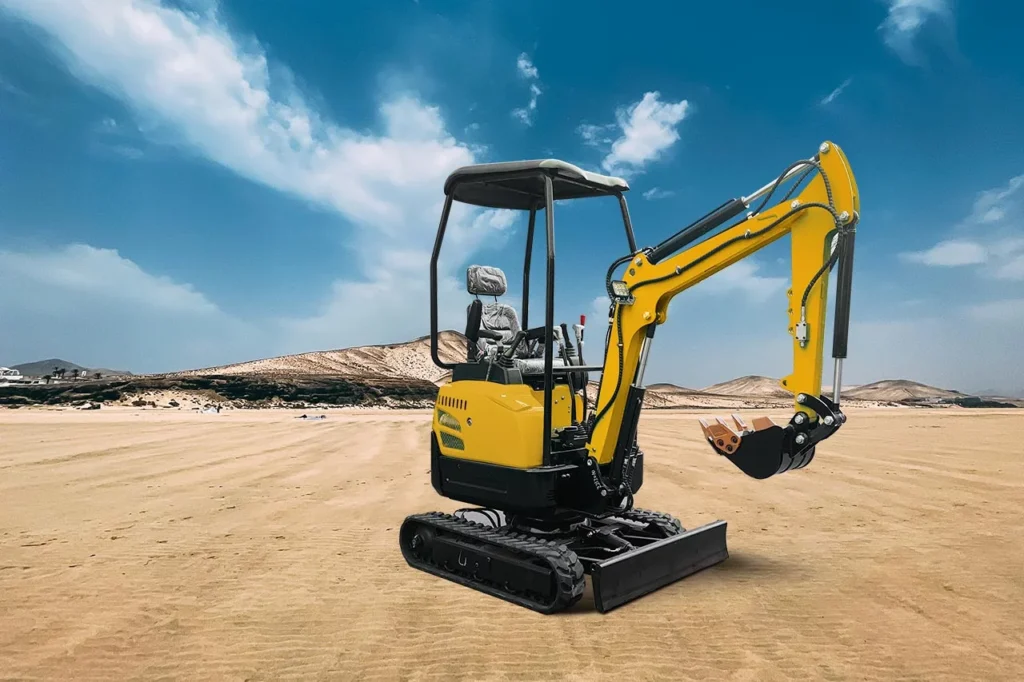Bem-vindo ao meu blogue!
Antes de nos debruçarmos sobre o conteúdo, gostaria que se juntassem a mim nas minhas plataformas de redes sociais, onde partilho mais informações, interajo com a comunidade e publico actualizações. Eis como se pode ligar a mim:
Facebook:https://www.facebook.com/profile.php?id=100087112105480
LinkedIn:https://www.linkedin.com/showcase/99327366/admin/dashboard/
Agora, vamos começar a nossa viagem juntos. Espero que considere o conteúdo aqui apresentado perspicaz, cativante e valioso.
Introdução

Mini excavators, also known as compact excavators, are designed to handle a variety of tasks in construction, including digging, lifting, and grading. The smallest mini excavators are particularly useful in confined spaces where larger machinery would be impractical. Their ability to perform heavy-duty tasks while occupying minimal space makes them highly sought after in industries such as landscaping, residential construction, and urban development.
These excavators are built to be lightweight yet powerful, making them ideal for jobs that require both agility and strength. Despite their small size, the smallest mini excavators can still manage impressive loads and reach impressive depths, depending on the model and configuration.
Why Choose the Smallest Mini Excavator for Your Project?
The smallest mini excavators are particularly beneficial for projects that demand flexibility, such as:
- Urban Construction: Navigating narrow streets, alleys, and restricted work zones.
- Paisagismo: Performing detailed and precise digging for gardens, ponds, or patios.
- Demolição e remoção de detritos: Clearing rubble in confined spaces, such as small buildings or houses.
- Trabalhos de utilidade pública: Installing underground pipes or cables in tight spaces.
The combination of size, power, and versatility makes the smallest mini excavators a perfect choice for a range of specialized tasks that require maneuverability and precision.
Key Features of the Smallest Mini Excavators

When shopping for the smallest mini excavator, there are several important features to consider. These features can affect both the performance and suitability of the machine for specific tasks.
Compact Size and Weight
One of the most important factors that distinguish the smallest mini excavators is their compact size. These machines typically weigh between 1 to 3 tons and can easily fit through doorways, narrow pathways, and around obstacles on the job site. Their lightweight design allows them to be transported more easily, making them a great choice for projects that involve multiple job sites or tight spaces.
Maneuverability and Stability
Despite their small size, mini excavators are built for high maneuverability. Their low ground pressure and adjustable tracks allow them to navigate uneven terrain with ease. Many of the smallest mini excavators come equipped with rubber tracks that provide stability on soft ground and reduce damage to delicate surfaces like lawns and driveways.
Potência e desempenho hidráulicos
While compact in size, the smallest mini excavators are equipped with hydraulic systems that provide powerful digging capabilities. Depending on the model, these machines can offer a digging depth of up to 10 feet and have enough lift capacity to handle a variety of construction tasks, such as trenching and lifting heavy materials.
Acessórios versáteis
Another key feature of mini excavators is the variety of attachments available. The smallest mini excavators can be fitted with a range of tools, such as buckets, augers, breakers, and grapples, which expand their functionality. Whether you need to dig trenches, demolish small structures, or move debris, having the right attachment can greatly enhance the machine’s versatility.
Easy Operation
Operating the smallest mini excavators is generally straightforward, even for those who are not experienced operators. These machines often come with intuitive control systems that make it easy to operate their various functions. Additionally, many mini excavators have adjustable cabs that allow operators to sit comfortably, even during long hours of operation.
Performance Comparison of the Smallest Mini Excavators
The smallest mini excavators come in a range of models and configurations, each with unique performance characteristics. Below is a table comparing the key features of some of the most popular smallest mini excavators on the market.
| Modelo | Motor | Peso operacional | Potência | Profundidade máxima de escavação |
|---|---|---|---|---|
| Fabricantes de escavadoras BME 17 | Laidong/Kubota | 1700KG | 29KW/18,8KW/10,2KW | 1800 mm |
| A melhor mini-escavadora chinesa BME 18 | Laidong/Kubota | 1800KG | 29KW/18,8KW/10,2KW | 2100 mm |
| Mini-escavadora de 2 toneladas BME 20 | Laidong/Kubota | 2000KG | Maximum Digging | 2200mm |
| A melhor mini-escavadora de 3 toneladas BME 30 | Laidong/Kubota | 3000KG | 18.8KW/22.1KW | 2350mm |
This table gives you a snapshot of the most common small mini excavator models, highlighting their weight, digging depth, engine power, reach, and lift capacity. While they all offer similar digging depths and reach, the engine power and lift capacities vary slightly, depending on the model.
How to Choose the Smallest Mini Excavator for Your Needs

Choosing the right smallest mini excavator depends on the specific requirements of your project. Here are some key considerations:
Job Site Size and Accessibility
If your worksite is especially tight or difficult to access, you may need the smallest, most compact mini excavator available. Machines with a weight of around 1.5 tons or less are ideal for squeezing through narrow pathways or doorways.
Requisitos da tarefa
Different tasks require different specifications. For digging and trenching, a mini excavator with a deeper digging depth and higher lift capacity will be essential. If you’re working on a landscaping project, you might prioritize a machine with excellent maneuverability and a variety of attachments.
Transportabilidade
If you need to move your mini excavator between various job sites, consider how easy it is to transport. Smaller machines with a weight of around 1.5 to 2 tons are easier to tow using standard trailers, reducing transport costs and time.
Fuel Efficiency and Running Costs
While smaller mini excavators are more fuel-efficient than larger models, it’s still important to choose one with good fuel economy, especially for long-duration tasks. Compare the fuel consumption rates of different models to find one that meets your needs and budget.
Conclusão

The smallest mini excavators offer an excellent combination of power, precision, and portability, making them an excellent choice for a wide variety of construction tasks. Their compact size allows them to operate in confined spaces while still delivering strong performance in terms of digging depth, lift capacity, and attachment versatility. By carefully considering the needs of your project, you can choose the right smallest mini excavator that will help you achieve your goals efficiently and cost-effectively.
FAQ
What is the maximum digging depth of the smallest mini excavators?
The smallest mini excavators typically offer a maximum digging depth of around 7 to 10 feet, depending on the model and configuration.
Can I use the smallest mini excavator for demolition work?
Yes, the smallest mini excavators are suitable for light demolition work, especially when fitted with the appropriate attachments, such as a breaker or grapple.
How much can the smallest mini excavators lift?
The lift capacity of the smallest mini excavators generally ranges from 2,000 to 2,800 pounds, depending on the model.
Are small mini excavators easy to transport?
Yes, small mini excavators are relatively lightweight and compact, making them easy to transport on standard trailers, which is an advantage for those working on multiple job sites.
Can the smallest mini excavators be used for landscaping projects?
Absolutely! Small mini excavators are commonly used in landscaping due to their ability to maneuver in tight spaces and handle a variety of tasks, such as digging trenches and leveling ground.
How fuel-efficient are the smallest mini excavators?
Small mini excavators tend to be fuel-efficient compared to larger models, but fuel efficiency varies depending on the model and the type of tasks being performed. It is important to check the specifications of each model for fuel consumption rates.
